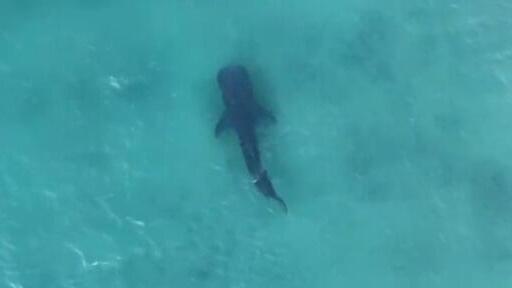Dr. Aviad Scheinin, head of the top predators program at the Morris Kahn Marine Research Station at the University of Haifa’s Charney School of Marine Sciences, said the whale shark returned to Ashkelon on Wednesday before heading back north toward Ashdod.


“The whale shark poses no danger to humans, and there’s no need to close the beaches,” Scheinin said. “However, it is a protected species and classified as endangered, so it is strictly forbidden to harm it.”
According to the Israel Nature and Parks Authority, the whale shark (Rhincodon typus)—considered the largest fish in the world—feeds on plankton, small fish and tiny crustaceans filtered from the water. Despite its massive size, it poses no threat to people. The species is listed as “Endangered” by the International Union for Conservation of Nature (IUCN), can reach lengths of 12 to 14 meters (39 to 46 feet), and may live up to 100 years or more.
Though rare, whale sharks have previously been seen in Israel’s Red Sea waters near Eilat. The species was first identified in April 1828 when a 4.6-meter specimen was harpooned in Table Bay, South Africa. It was later described by British military doctor and zoologist Andrew Smith, who published a more detailed account in 1849.
The name “whale shark” reflects both the creature’s size—comparable to that of a whale—and its method of feeding, which involves filtering food from seawater in a manner similar to baleen whales.
